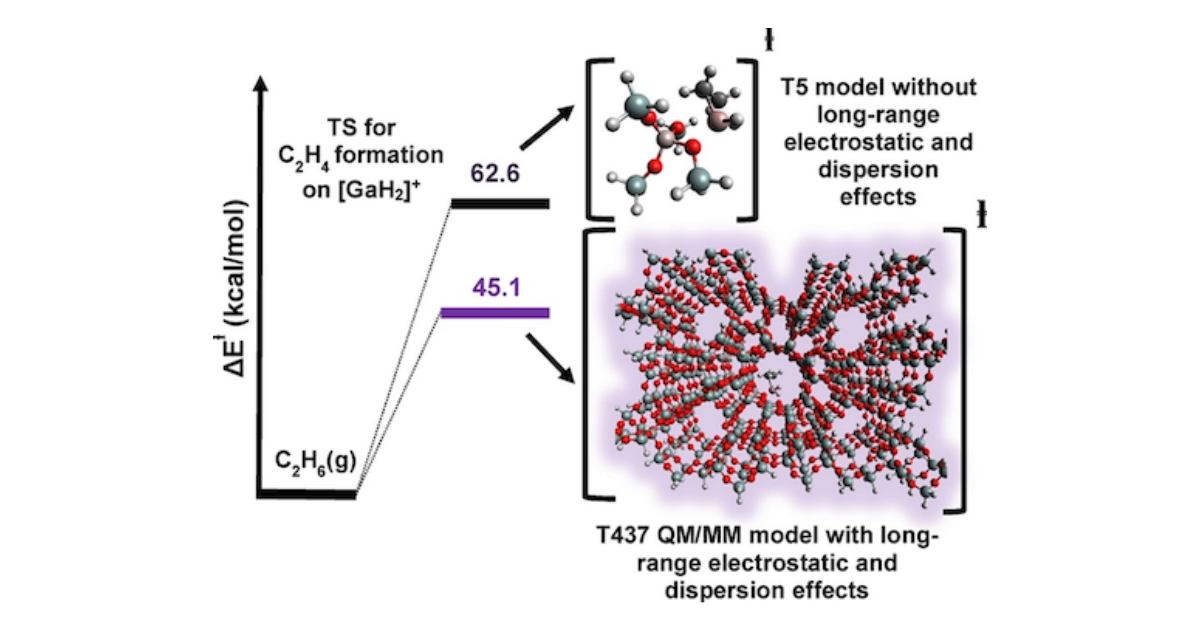Impact of Long-Range Electrostatic and Dispersive Interactions on Theoretical Predictions of Adsorption and Catalysis in Zeolites
E. Mansoor, J. Van der Mynsbrugge, M. Head-Gordon, A. T. Bell, Catalysis Today 2018 312 , 51-65.
DOI: 10.1016/j.cattod.2018.02.007

Abstract
In this paper, we review the importance of long-range zeolite framework interactions in theoretical predictions for a variety of zeolite-catalyzed processes, and we show why such interactions must be determined accurately in order to reproduce experimentally measured adsorption and activation energies. We begin with an overview of the different strategies that have been used to account for long-range coulombic and dispersive interactions of zeolite framework atoms with species adsorbed at an active site. These methods include full periodic-DFT calculations and multi-layer hybrid techniques. Electrostatic interactions are observed to have a more significant impact than dispersive interactions on the geometries of ion-pair transition states and adsorbed species. Stabilization of the TS relative to reactant complexes is also dictated by electrostatic interactions. Dispersion effects are found to significantly stabilize both transition and reactant states for adsorbed species, especially those which have dimensions that provide good fits within the zeolite pore or cavity. We also show that the relevance of particular active site configurations can be missed, if the effects of long-range interactions are neglected. As a case in point, we demonstrate that a site previously considered inactive for ethane dehydrogenation, [GaH2]+ may in fact be more active than previously thought, when the impact of long-range interactions on the predicted activation energy is taken into account. Finally, the use of hybrid quantum mechanics/molecular mechanics approaches on extended, finite zeolite clusters has emerged as an accurate, highly cost-effective, and versatile alternative towards overcoming some of the present-day limitations of periodic calculations.